#ann moses
Video
Peter Tork dancing, 1960s to 1980s; clips from “The Spy Who Came In From The Cool,” the Star Collector” sequence, Head, 33 & ⅓ Revolutions Per Monkee, The Monkees live show in Michigan in August 1987, Solid Gold in 1987, and the Pat Sajak Show in 1989. (Audio from Peter’s live performance of “Long Title: Do I Have To Do This All Over Again?” at CBGB on July 31, 1977.)
“Between scenes, Peter’s always reading some book. He’s really the intellectual of the group, interested in various religions and politics. Peter has a smile for everyone who comes on the set no matter how tired he gets. The boys work every day from 7 A.M. to 7 P.M.
[...] Whenever he gets the chance, Peter talks to others about the Beatles. He’s quieter off the screen than he seems on and is always very courteous to others. He loved dancing in high school but now he’s not so crazy about it though he’s still good.” - Ann Moses, Tiger Beat, January 1967
Q: "Being a multi-instrumentalist, did any of the instruments come to you easier than others?"
Peter Tork: "No. It’s all the same. Each instrument has its own facilities, its own challenges. It’s funny. I think I play piano best of all. I think I rank highest as a banjo player among all the people who do what I do at any given thing. In other words I’m in the 15th percentile as a piano player, and maybe 25th as a guitar player and 85th as a banjo player, but I don’t know why that is. One, is it’s simple, I get to relax, I don’t know. Each thing is different and I don’t get to dance as much. I play guitar mostly because I get to dance with it. Piano doesn’t dance. It just sits there – a wallflower instrument – a stick in the mud." - Enigma Online, 2006; published 2015
#Peter Tork#Tork videos#Tork quotes#Tork edits#Tork songs#1960s#1980s#<3#<333#The Monkees#Monkees#Davy Jones#Michael Nesmith#Micky Dolenz#Ann Moses#oh to have talked to Peter about The Beatles#can you queue it
89 notes
·
View notes
Text



Peter being interviewed by Ann Moses, 1967
Ann: Peter, what do you have so much of you could afford to give some away?
Peter: The only thing there is so much more of to give away.
Ann: Which is?
Peter: The power of love.
#i have a bunch of drafts saved that i will be posting soon <3#1967#1960s#60s#peter tork#sixties#quotes#ann moses#tiger beat#interview
103 notes
·
View notes
Text
I couldn’t post yesterday because I was in the hospital having my gallbladder removed but
Yesterday was Ann Moses’ birthday!
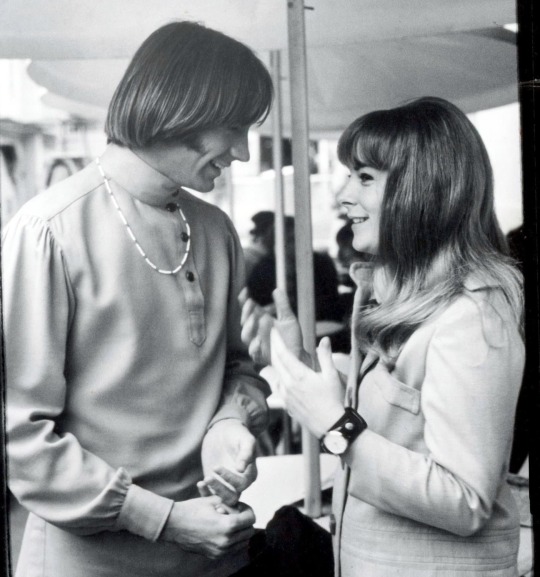

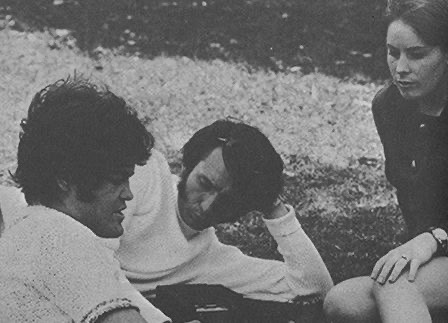
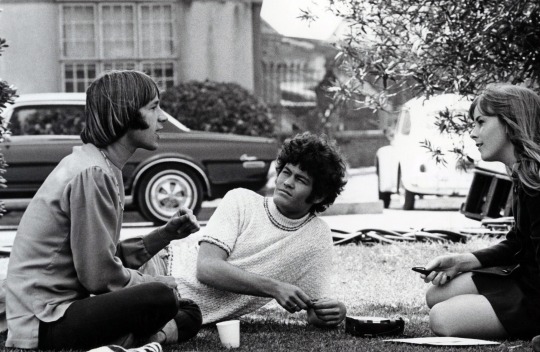

9 notes
·
View notes
Text

Ann Moses by Bob Custer, 1967
#ann moses#bob custer#robert custer#tiger beat#nme#monkee spectacular#journalists#writers#editors#classic rock#british invasion#f*ck this new post editor#faves
12 notes
·
View notes
Text


One of the interviewees selected by director Denis Sanders to contribute to his 1970 concert documentary, Elvis That's The Way It Is, is Ann Moses. At the time of the movie, she was editor of teen fan magazine Tiger Beat, and also wrote for the UK publication New Musical Express as Hollywood correspondent, and for which she filed reports on Elvis' Las Vegas performances. She had also been ringside at the recording of Elvis' 1968 television special.
In an article written on her website, annmoses.com, she recalled;
"...When Denis first contacted me I was thrilled when he said he wanted to interview me for the film, but it was so much more than that! He said I would be a guest of MGM for Elvis’ show where they would be filming! An offer I couldn’t refuse. What few realize, though, is while I was so involved and so comfortable in the world of celebrities and Hollywood, I would get nauseous whenever I would have to speak on camera or make a live appearance. I always preferred being on the back side of the camera!
That said, I made my way to Vegas in August of 1970, I was more than excited. But it got better and better. As I gave my name to the Maitre de of the International Showroom, he led me and my party of four down to the table that was one table to the right of center stage and we had the front four seats. Of course, I was not shy about sitting in the first seat closest to the stage
It was a complete joy to see Elvis live again (as I had been present at his first live appearance in 10 years on July 31, 1969 for his opening show at the International), but I was well aware that the hand-held cameras were recording Elvis and the “fans” that would be a part of the documentary.
It was later in the month that Denis came to my Tiger Beat office and interviewed me with cameras rolling for my “interview” portion that appears in the film. I sat at my office desk and answered his questions nervously, and then they shot cover footage of me walking down the hall and talking with my Art Editor..."
Ann Moses remains very active on social media - link to her Facebook here; (facebook.com/annmoses)
#elvis 1970s#elvis history#elvis presley#elvis fans#elvis in the 70s#rock history#classic hollywood#tiger beat#new musical express#mgm studios#musicians#live music#las vegas history#las vegas#ann moses#music journalism
58 notes
·
View notes
Text

The packed stadium. 🏈
#go blue#wolverines#u of m#university of michigan#ohio state buckeyes#ohio state football#ohio state university#Ohio state#ann arbor#Michigan#maize and blue#the big house#nfl draft#nfl football#college football#naive art#folk art#grandma moses#football player#football coach#football stadium#football party#football art#friday night lights#m club#quarterback#tom brady#pop art#football tailgating parties#childrens book illustration
19 notes
·
View notes
Text
sensing a theme within the girlboss community...
52 notes
·
View notes
Text
The Idol (2023- ) tv series

-(started) watchin' Season 1- 6/5/2023- on Max
#The Idol#(2023- )#tv series#sam levinson#reza fahim#the weeknd#drama#lily rose depp#jennie kim#rachel sennott#suzanna son#troye sivan#dan levy#hari nef#sophie mudd#anne heche#hank azaria#mike dean#moses sumney#jane adams#da'vine joy randolph#melanie liburd#elizabeth berkley#Max
18 notes
·
View notes
Photo
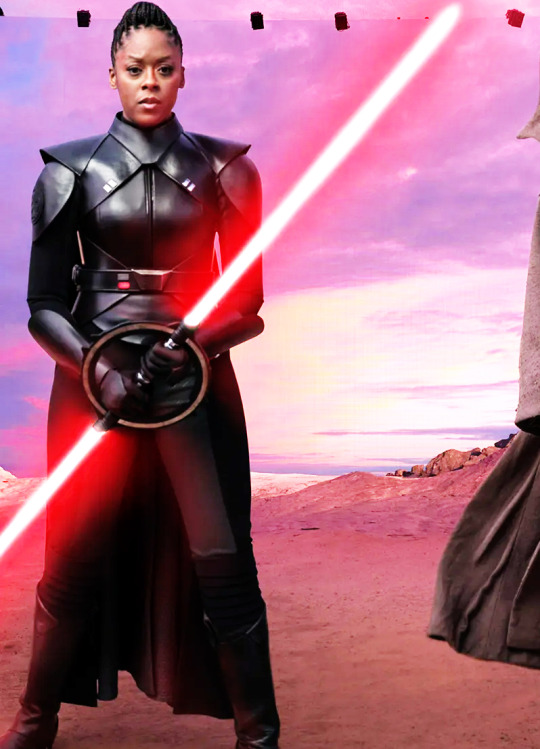
Moses Ingram as Inquisitor Reva/The Third Sister in ‘Obi-Wan Kenobi’ (TV Mini-Series, 2022).
#Moses Ingram#inquisitor reva#the third sister#star wars#obi-wan kenobi#fashion#brown hair#brown eyes#fantasy#Suttirat Anne Larlarb
104 notes
·
View notes
Text

Photo by Kenny Lieu.
“When I received word of Davy Jones’ latest venture called ‘The Street,’ I couldn’t have been more excited for David. His plan was to have a ‘street,’ actually the whole floor under the famous ‘in’ club The Factory, where his friends could sell their handmade goods. Then the invitation came for the opening and I thought ‘he’s really done it!’ Along with our photographer Kenny Lieu, I went to the opening, which I’m sorry to report was a little disappointing. Only a few of the stalls were filled and the supposed star-studded gala opening was everything but that!
Mark and Melinda Slade were there, as was Peter Tork and of course, David, Linda and Talia. If you’re planning a trip to Hollywood, along with Sam’s ‘One of a Kind’ in North Hollywood, be sure to stop by David’s ‘The Street’ for I’m sure before long, more stalls will be filled and there will be much more activity. I hope so, for it’s an ingenious plan!” - Ann Moses in her Meow! Column, Tiger Beat, September 1970
#Peter Tork#Tork quotes#Davy Jones#Linda Jones#Talia Jones#et al.#The Monkees#Monkees#Ann Moses#can you queue it
27 notes
·
View notes
Text
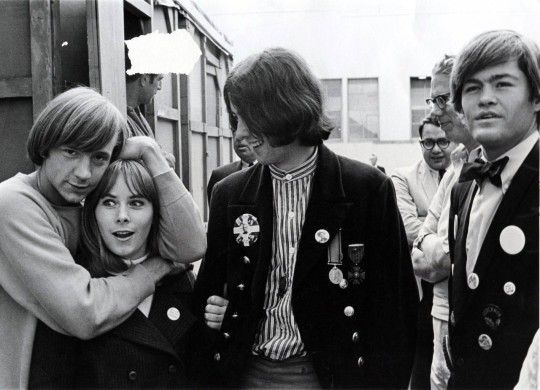
“After our interview, Jimmy asked me if I could introduce them to the Monkees – the buzz was out on this new pop sensation. So, I made arrangements to take Jimmy out to their set. I adore the photo that was taken that day – My left arm through Jimmy's, Peter has me in a 'headlock,' and both Micky and Jimmy have their jackets covered in buttons. This was the coolest thing at the time. My button says, 'Fly High with the Yardbirds.'” — Ann Moses
#ann moses#jimmy page#the yardbirds#1966#micky dolenz#quotes#60s nostalgia#60s fashion#60s music#1960s music#1960s aesthetic#60s#sixties#the monkees#monkees
278 notes
·
View notes
Photo

Day 11: Annie Oakley!
Phoebe Ann Mosley was born to a poor Ohio family. Her father died six years later, and her mother was unable to provide for her seven children. She was sent to an orphanage before being “bound out” to a family as a servant, where she was so abused that eventually she ran away. Making it back home, she supported her siblings and mother, first by hunting for food and then by occasional sharpshooting contests.
She met Frank E. Butler, her eventual husband, by beating him in such a contest; unlike in Annie Get Your Gun, he gave up his sharpshooting career to work as manager for hers. Under the name Annie Oakley, she toured the world with Buffalo Bill’s Wild West show, and over the next few years, she became its highest paid performer. She shot holes in playing cards and a cigarette out of Wilhelm II’s mouth, appeared in one of Thomas Edison’s early motion pictures, and befriended Sitting Bull, who dubbed her Watanya Cicilla, or “Little Sure Shot.” (Sitting Bull’s position with the show arguably sums up the whole thing - Cody treated him with personal respect but also very much turned him into a living museum exhibit for white crowds; nevertheless, he liked Annie enough to symbolically adopt her).
Annie was paralyzed in a train crash in 1901, and though she recovered, she retired from professional sharpshooting, although she still performed occasional feats for charity. She and her husband raised and donated money to help orphans, and she also advocated for women’s rights.
Annie died in 1922; Frank, broken-hearted, passed two weeks later. Buffalo Bill’s show - for both good and ill - helped define the “Old West” in American culture, and Annie remains the archetypal American cowgirl.
#annie oakley#phoebe ann mosely#history#american history#awesome ladies of history#october 2022#my art#markers#gun mention#racism mention#abuse mention
4 notes
·
View notes
Text
Martin Simpson and Thomm Jutz: A Wider Understanding
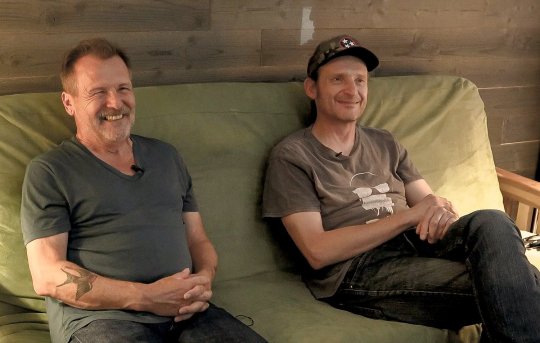
Martin Simpson & Thomm Jutz
BY JORDAN MAINZER
Martin Simpson & Thomm Jutz's recent collaborative album is specific in scope but infinite in potential repeatability. Both folk singer-songwriters and guitarists are endlessly curious consumers of historical songs from specific regions: for Simpson, largely music from the British Isles, and for the American but German-born Jutz, the American South. (While each has dabbled in studying and recording music from other regions, they've long honed in on England and the States.) Jutz, also a lecturer and essayist, had long been interested in a collection from English folklorist and song collector Cecil Sharp, “English Folk Songs from the Southern Appalachians," which spans 1916-1918 and was first published in 1932. The 274-song collection is chock full of ballads, hymns, nursery rhymes, and more. Jutz was particularly drawn to the songs of singer Mary Sands and folklorist/singer Jane Gentry. He wanted to do something with these songs, but what?
When longtime British folk music label Topic Records put Jutz in touch with Simpson--an artist he had long admired--they spoke on the phone and came up with an idea: In the spirit of the way in which an Englishman like Sharp ended up collecting songs from Appalachia, what if the two of them picked Sands and Gentry songs and asked various English and American folk artists to sing them over new arrangements? After all, even if the United States and England, throughout the years, have had unique histories, their folklore shares themes of class and archetypal gender struggles. So both Simpson and Jutz picked six songs and asked five artists, from their respective countries, to sing, saving one song each for themselves. The timeline from idea to planning to recording--which took place both in Nashville and England--was mere months. Nothing But Green Willow: The Songs of Mary Sands and Jane Gentry, released last fall on Topic, was born.
Indeed, Nothing But Green Willow is an inspired collection, pairing some of the world's finest folk interpreters, singers, and instrumentalists, with Simpson and Jutz's terrific dual guitar arrangements. Some, like Emily Portman, Angeline Morrison, and Fay Hield, who sing on "Far Annie", "The Suffolk Miracle", and "I Whipped My Horse", respectively, approach folk music in their own careers from the same analytical perspective as Jutz and Simpson, and so they were natural fits. Jutz himself emphasizes the beatific nature of a song like "Awake! Awake!", while country singer Tammy Rogers and actress/singer/model/former neonatal nurse (!) Odessa Settles pry at the innate weariness of "Married and Single Life" and "Pretty Saro". Other tunes are more upbeat, from Simpson's spritely guitar workout on "The Wagoner's Lad" to Tim O'Brien's fiddle jaunt on "Edwin in the Lowlands Low" and Sierra Hull & Justin Moses' deft tempo exercises on "Geordie". My favorite songs are the ones on which Simpson and Jutz's interplay even further plays off of the other featured artists, whether that's Cara Dillon's quintessential Irish twang on on "Come All You Fair and Tender Ladies" or Dale Ann Bradley & Tim Stafford's blaring vocal harmonies on "Jacob's Ladder".
Best of all, and what I gleaned most from listening to Nothing But Green Willow and a phone conversation with Jutz late last summer, is that the record was, truly, a labor of love. "It was nice to sit down and make music without thinking of who we had to please," Jutz said, "or how to craft a narrative around the project." As Jutz is someone who is both an original songwriter and arranger and interested in the technological impact on, and cultural importance of historic recordings, Nothing But Green Willow is an album seemingly perfectly suited for his ethos. And it's also an album whose process can be used to record, rearrange, and re-contextualize songs from any era and place.
Below, read my conversation with Jutz, edited for length and clarity. We talked about his historical relationship with the Sharp collection, his and Simpson's logic in pairing singer with song, and being a folk interpreter in a world of ever-changing technology.
Since I Left You: Around when did you get the idea for Nothing But Green Willow, and when was it recorded?
Thomm Jutz: My original idea to do something with the Sharp collection existed for many years, but I didn't know how to get to it. But when I was introduced to the folks at Topic Records, they introduced me to Martin. Once Martin and I discussed the idea a little bit, it became clear how we wanted to approach it. We had about 2-3 months of warm up time before recording, and that was it. It was recorded [late summer] 2021, half of it in Nashville. Martin was in upstate New York for Richard Thompson's guitar camp, and he flew down to Nashville to record about 7 songs. We flew to England together to record the rest of the album. It came together fairly quickly.
SILY: Do you remember the first time you became familiar with the specific songs on this album?
TJ: With these specific songs, it's a little hard to answer. Some, like, “Come All You Fair and Tender Ladies” and "The Gypsy Laddie", I've known for more than half of my life because of the Carter Family, Bob Dylan, and people like that. About 10-15 years ago, I really got into the Sharp collection and got the books. When Martin and I discussed making the record and focusing only on the songs of Jane Gentry and Mary Sands, I obviously got into [their specific songs] on a much deeper level, hearing the different versions of the songs. It's been a process going on for more than 20 years in one way or another.
SILY: What do all of the featured singers on the album have in common to you? Is there something that ties them together?
TJ: Yes. They all have a deep appreciation for folk music in the true sense of the world, music that comes from the oral tradition. They all come out of that tradition, even the bluegrass [musicians] like Sierra Hull and Dale Ann Bradley. They grew up playing music by ear from people they knew. They didn't study it. Everybody who is on these records love these songs and the true roots of American folk music just as it can be found in English music. It's that love and appreciation that unites these people, but it's also their capacity to interpret them in new ways. There are certainly other ballad singers out there in England and in the United States, but Martin and I didn't want to make this a ballads record where people sang songs a capella. That's been done, and it's great, but we wanted it to approach it a little differently.
SILY: Was it your and Martin's job to pick which singer would sing which song, or did you let the singers pick?
TJ: Once Martin and I looked at all the songs Jane Gentry and Mary Sands had contributed to the Cecil Sharp collection, Martin picked his 6 favorites, and I picked my 6 favorites. I said, "Why don't I [assign] 5 singers here in the States with a song, and you do the same in England." We suggested the songs to the singers, so as to avoid, say, 3 people wanting to sing the same song, or people picking [other] songs from the over 90 songs contributed by these two ladies. We felt pretty strongly about suggesting, "Hey, why don't you do this one!" It's a little risky, but it really worked out.
SILY: What factors did you take into account when making the assignment, from the qualities of each singer's voice to other songs they've sung in the past?
TJ: Not just musical considerations--though that's certainly a part of it--but thematic considerations. In the case of Sierra Hull and Justin Moses, who come out of the bluegrass tradition, I thought it would be interesting to have them sing "Geordie", which had been previously recorded by, among other people, Norman Blake and Tony Rice, which are huge influences in the bluegrass world and had a huge influence on Sierra and Justin. It was interesting to me to see how they would interpret that song that had already been interpreted by two of their heroes. In the case of Tammy Rogers, who is from East Tennessee, she remembers talking to her grandmother, [who would go] to see the Carter Family perform in school houses and court houses. For her, ["Married and Single Life"], which the Carter Family turned into "Single Girl, Married Girl" was interesting to me because of the family connection. Taking the song "Jacob's Ladder", I wanted Dale Ann Bradley to sing that because she's profoundly influenced by the Stanley Brothers, who recorded a version of "Jacob's Ladder" that's very different than the one we have on this album. It's almost like a different song. In the case of Odessa Settles, a wonderful African American gospel singer in Nashville, I thought the lyrics to "Pretty Saro" take on such a profoundly different meaning when sung by an African American person. That was really interesting to experience that.
Martin had his own criteria to pick the British singers, but it's a little harder for me to speak to that.
SILY: Were there any instances where the picked singer was wholly unfamiliar with the original song?
TJ: Oh yes. There were definitely people here in America who weren't familiar with some of the songs or had heard completely different versions. I can't speak to that for the people in England. I think the people in England are from a more serious folk ballad singing tradition, so they were likely a little more familiar with these songs than those on the American side.

SILY: Why did you decide to release "Come All You Fair and Tender Ladies" as the first taste of the record?
TJ: Cara Dillon's vocal makes such an incredibly beautiful statement. It's traditional, but somewhat contemporary in the way she sings it. She's also a very well-known artist over there, which was part of the consideration. It's also a song that's--I hesitate to use the word "popular"--well-known in the folk tradition in England and still to this day played on the Grand Ole Opry by The Whites in a different version. It's a thematic common ground for the audience. I also thought that the guitar parts Martin and I played on that were part of what makes our collaboration as guitarists interesting. It sets the tone well for what this record is all about.
SILY: Going into the recording, how much did you and Martin work on the arrangements?
TJ: Not at all. Martin doesn't read music, so he had maybe played the melodies to these tunes in their simplest forms without chordal accompaniment. I recorded [some chords] and sent it to him. We both lived with it and didn't do anything before we started playing. The only two songs where we had a little more of an idea [what we were going to do were] "The Wagoner's Lad", because Martin was singing it on the record and had a guitar part worked out, and "The Gypsy Laddie", which I sing on and had a guitar part worked out for it. None of the songs on the record took more than 2 hours to record. It was very much spur of the moment. The singers came in, some not knowing what key they wanted to sing in. Time signatures changed. That's the beauty of it. if you have people you can just sit down with and trust them that it's going to be good, it doesn't require a lot of pre-meditation or pre-production. To me, that's the most exciting way of making and recording music.
SILY: Someone like Fay Hield comes at folk music with both a performance and academic point of view. Does anybody else on here have a similar background?
TJ: I think Emily Portman is somebody who has a very deep understanding of where this music comes from and the different possibilities of interpreting it. Fay teaches music at the University of Sheffield and is an authority. She said a lot of things during the recording session that really opened my eyes and made me think about the music slightly differently. I'm a teacher at Belmont University, so you might call me an academic, though I don't think of myself as such. But I've spent a lot of time with this music and where it comes from.
SILY: How does your unique combination of perspectives affect how you approach these tunes?
TJ: Once you know where you something comes from in terms of place--place not just being a geographical location but in all of its sociopolitical manifestations--you listen to the lyrics differently. You look at the expression of class in the lyrics. Class was such an important factor in England when these songs were originally created, although we can't put an exact date of creation on them. That sense of class was very much prevalent in Appalachia, too, albeit in a different way and political context. The more you know about these places and the people who lived there, you might not understand the music deeper, but you understand it wider and broader.
SILY: Can you tell me about your relationship to the two songs on here that feature your voice?
TJ: "Awake! Awake!" is a song I didn't know before I got into this collection. It wasn't one I had originally selected for this album, and Martin neither, but as I explored, I was captivated by the beauty of the melody. I suggested to Martin when he got to Nashville that we shouldn't leave it out. He was on board, and we came up with an arrangement really quickly. It's a gorgeous lyric. It turns out the title of the album is part of the lyrics to that song. "Gypsy Laddie", or "Gypsy Davy", as a lot of people know it, is a song I've always loved. The opening line of that song--it's a little different in this version--but a lot of the versions I'm familiar with start with, "Gypsy Davy came through the woods, sang so sweet and gaily, made the woods around him ring and captured the heart of a lady." It's one of the most beautiful opening verses of any songs I've ever known. It's obviously not just about a gypsy riding through the woods singing, it's about an archetype, the creator, a sorcerer who can charm not just people but nature with their music. It's such a beautiful representation of making music. That song has always been really geared to me, and it's also a very open-ended song. At the end of the song, we don't know whether the lady is dead, sleeping, happy, or sad. She runs away from her children and husband and with this Gypsy Davy character. That's the beauty of those old songs. They're not so linear. There's a lot of room for interpretation.
SILY: How did the two of you come up with the track sequencing?
TJ: Honestly, I don't think I'm good at sequencing records, but sometimes I have to do it. In this case, it was Martin and me trying to figure out how to not have songs in the same key and tempo back to back. It was more musical than thematic considerations.
SILY: What's the story behind the album art?
TJ: The album art is by the former owner of Topic Records who sold the company but is still very much a part of the Topic family and has become a well-respected painter. He had this painting of this willow tree, so once we came up with the title, the folks at Topic suggested it. I always think it's nice to have original art as part of the musical project.
SILY: Are you planning on playing any of these songs live?
TJ: If the right circumstances come up for me and Martin to play together! It would be very difficult to tour this record because there are so many people involved, but I'd certainly consider playing "Awake! Awake!" and "The Gypsy Laddie" in some of my solo shows.
SILY: In the folk tradition, it shouldn't really matter that you might not be the singer on a specific recording when playing that same arrangement live, but do you think it would do a disservice to the vocalists?
TJ: I don't think so. I think it would add a different character or shade or meaning.
SILY: Ostensibly, you could play all of these songs.
TJ: I guess we could, yes. I don't know if the opportunity is going to come up for us to tour in a way that makes sense, since we're living in different parts of the world, but I'd be interested in pursuing it.
SILY: Do you tend to actively seek out folk songs you're not familiar with or you've never heard before?
TJ: It depends. In the context of American music from the South, yes, because I'm really interested in it. But I'm not a folk song collector or scholar in the sense I'm trying to collect folk songs from, say, a certain part of Mexico. I'm limited in scope.
SILY: On paper, due to technology, this seems like a perfect time for folk music to thrive, because there's so much more at our disposal, so much more quickly. What it is like to be a "scholar" of folk music in this day and age?
TJ: Research, whether listening to music or reading about music, has gotten so much easier because things are so much more accessible. You can look up a word in the dictionary really quickly, but 30 years ago, you had to dig into it, and in the process of finding one word, you find 10 others that are really interesting. Maybe we're missing out on that a little bit. Overall, I feel that we're all very oversaturated musically in the way music is made and consumed. It's not something I'm very interested in. I'm so unplugged from the mainstream that I shouldn't really speak to it. But in terms of accessibility to information about music, I think it's a good thing that so many things are easily available to people. If somebody is interested in the Carter Family, they don't have to go to a store and dig through. At the end of the day, though, if people do that, it might be a good thing.
SILY: It reminds me of what you said about having a wide versus a deep appreciation for music. It's easier these days to have a wider appreciation, but to have a deeper appreciation, you still have to go through the old routes, the exploratory nature of researching one thing and finding relevant tangents.
TJ: Right. Just because you can listen to music widely doesn't mean that you understand it deeply. You still have to do the work as a listener to develop an understanding of the people who made the music and when those songs were recorded. To me, that's endlessly fascinating, so the more information I can get about it, the better.
youtube
#martin simpson#thomm jutz#interviews#topic records#nothing but green willow: the songs of mary sands and jane gentry#martin simpson and thomm jutz#cecil sharp#mary sands#jane gentry#nothing but green willow#emily portman#angeline morrison#fay hield#tammy rogers#odessa settles#tim o'brien#sierra hull#justin moses#cara dillon#dale ann bradley#tim stafford#richard thompson#carter family#bob dylan#norman blake#tony rice#stanley brothers#grand ole opry#the whites#belmont university
0 notes
Photo

Ann Moses interviewed in her Tiger Beat office during Denis Sanders’ documentary Elvis: That’s the Way It Is, 1970
#ann moses#elvis#that's the way it is#elvis presley#denis sanders#tiger beat#monkee spectacular#nme#classic rock#journalism#faves#missing my fave monkee girl on my feed lately
63 notes
·
View notes
Text
Annie Oakley
von Harald Schweim
Annie Oakley, die Titelheldin aus Irving Berlins Musical Annie Get Your Gun (1946), eigentlich Phoebe Ann Mosey, nach anderen Quellen Phoebe Ann Moses Butler, (* 13. August 1860 in der Nähe von Willowdell; † 3. November 1926 in Greenville, Ohio); war eine US-amerikanische Kunstschützin. International berühmt wurde sie durch ihre Auftritte in der Wildwest-Show von Buffalo Bill.…
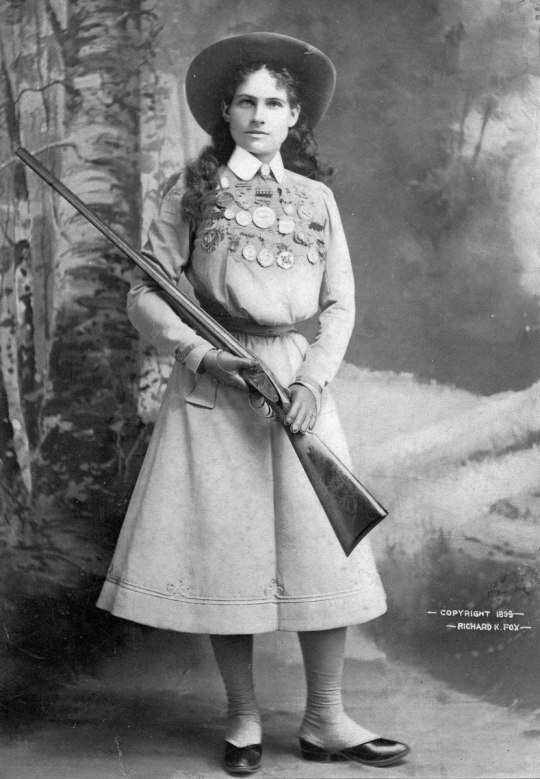
View On WordPress
#Annie Get Your Gun#Annie Oakley#Annie Oakley Foundation#Buffalo Bills Wildwest-Show#Butler and Oakley#Harald Schweim#Little Sure Shot#Phoebe Ann Moses Butler#Phoebe Ann Mosey#Sitting Bull#The Little Sure Shot of the Wild West#US-amerikanische Kunstschützin#Watanya Cecilia#Wilder Westen
0 notes
Text
Not enough information out there about how Mike supposedly designed clothes for Phyllis
1 note
·
View note